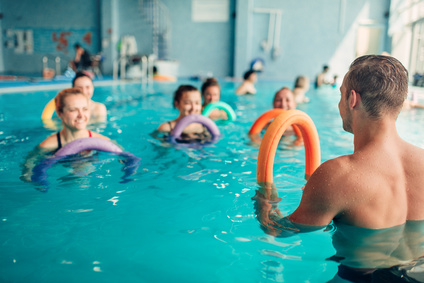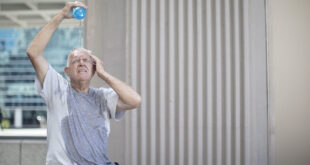Do you know what makes a cardio workout effective for adults over 50? Getting your heart rate up and keeping it up for at least 20 minutes at a time is key to gleaning the benefits this type of exercise has to offer.
The importance of raising your heart rate
For supporting a healthy heart and managing a healthy weight, adults over 50 should aim for a minimum 150 minutes of moderate intensity cardio exercise a week or 75 or more minutes of vigorous intensity exercise a week. At least two sessions of strength training are also recommended, especially for older adults looking to maintain muscle and preserve bone mass.
You can gauge the intensity of your exercise based on your heart rate. Subtract your age from 220 to get your maximum heart rate. If you are 55, for example, your maximum heart rate (the highest rate at which your cardiovascular system can handle physical activity) will be around 165 beats per minute.
Research shows that a moderately intense exercise should have your heart reaching between 50 and potentially 70 percent of your maximum heart rate and vigorous intensity exercise between 70 and 85 percent. You can calculate the target zone for your heart rate during physical activity with this helpful formula.
So what are the best ways to achieve heart-pounding physical activity each week? One easy, accessible, and fun method is with aqua aerobics! Don’t miss this essential guide to everything you need to know about aqua aerobics:

What is aqua aerobics?
Aqua aerobics is essentially any aerobic exercise activity that is completed while partially submerged in water. Typically done in groups in an indoor or outdoor pool, aqua aerobics may also be possible in open water sources like the ocean or a lake.
Health benefits of aqua aerobics
Cardio workout – splashing around in a pool may seem far from an intense cardio workout, but you would be surprised. Not only do you engage loads of muscle groups in aqua aerobics, but you find yourself working harder than you might normally on dry land because of the weightlessness feeling water provides.
Low-impact – the buoyancy of water means that your body only has to support a fraction of its weight while water does the rest. This means less pressure and strain on your joints which is good news, especially for older adults with arthritis.
Injury rehabilitation – there is a reason water-based exercises play such an important role in physical therapy regimens for injuries like tendonitis of the knee, fractured hips, and pulled muscles. There is a decreased risk of falling and re-injuring oneself, it is easier on the joints, and overall it promotes great flexibility and range of motion.
Stress-relief – for some people, exercising in the water is just more peaceful and fluid then sweating it out in a gym. This combined with the social component of splashing around in a pool with a class of like-minded adults focused on their health adds up to powerful stress relief too.
Strength-building – while water does make you feel somewhat weightless because it is denser than your body, it actually provides more resistance to your movements. This means you have to work harder and engage more muscles as you move along and complete various exercises.
Variety – unlike activities like badminton and cycling, aqua aerobics offers tons of variety when it comes to the type of classes you can take. You can try aqua jogging, aquatic kickboxing, aqua yoga, aqua dance classes, aqua tai chi . . . the list goes on! If you’re not too fond of one type of water workout, you have a whole slew of others to try.
Getting started with aqua aerobics
While jumping right into aqua aerobics seems like fun, you might find it more pertinent to dip a proverbial toe in the pool first. Like with any new fitness regimen, you’ll want to start slow. Too often people will develop some type of overuse injury simply from going too hard too fast.
Instead, launch your new physical fitness plan with a beginner’s aqua aerobics class and get a feel for what it is like to exercise in the pool. How does it affect your balance? How fast can you get your heart rate up? Then, make a plan to stick with it. Schedule aqua aerobics workouts weekly, and if you are unable to make a class, simply hit a pool on your own and practice aqua jogging, water squats, treading water, swimming, and so on.
Don’t forget to talk to your doctor as well about starting a new aqua aerobics program to make sure there aren’t any physical or health considerations you may have forgotten.









Join the Discussion
Type out your comment here:
You must be logged in to post a comment.